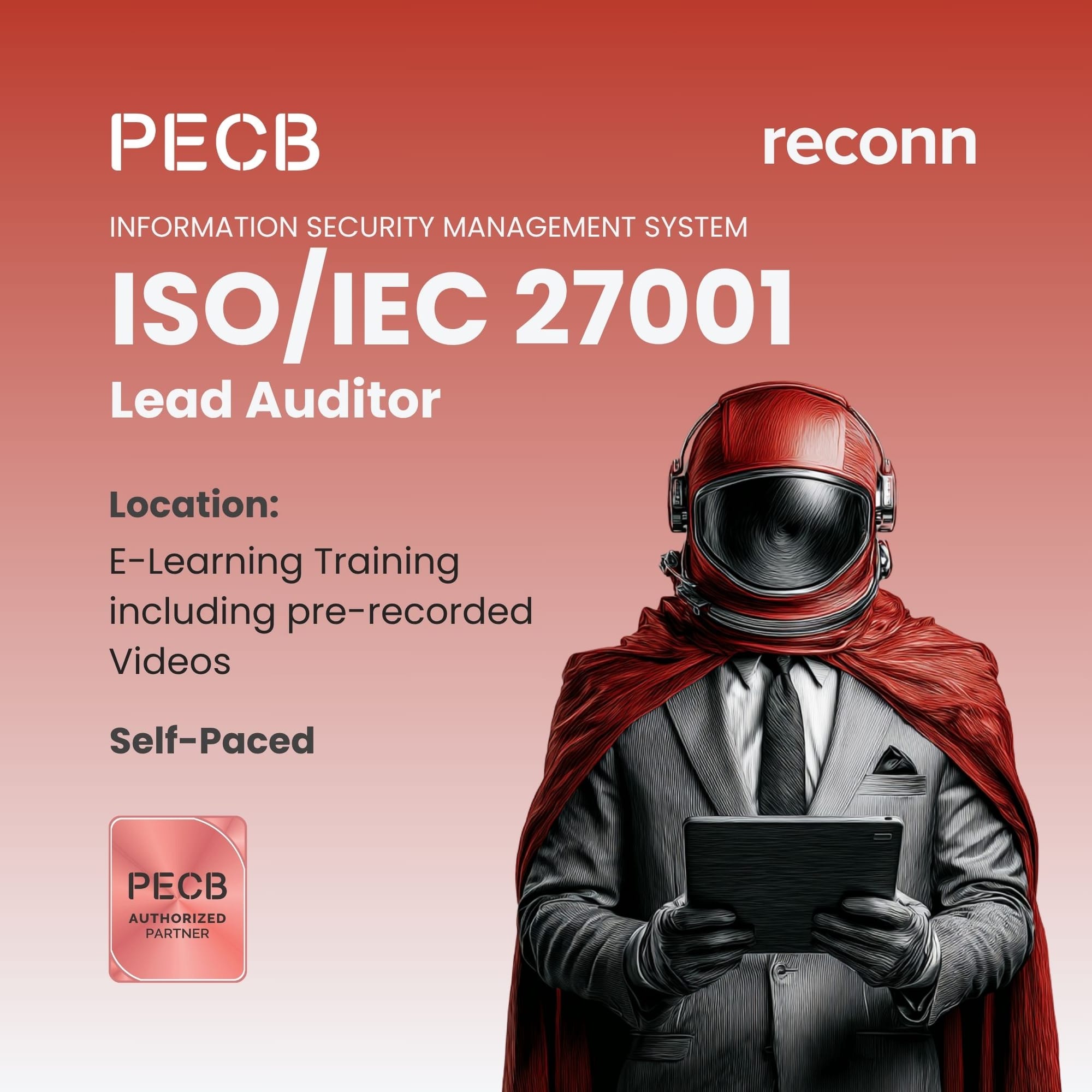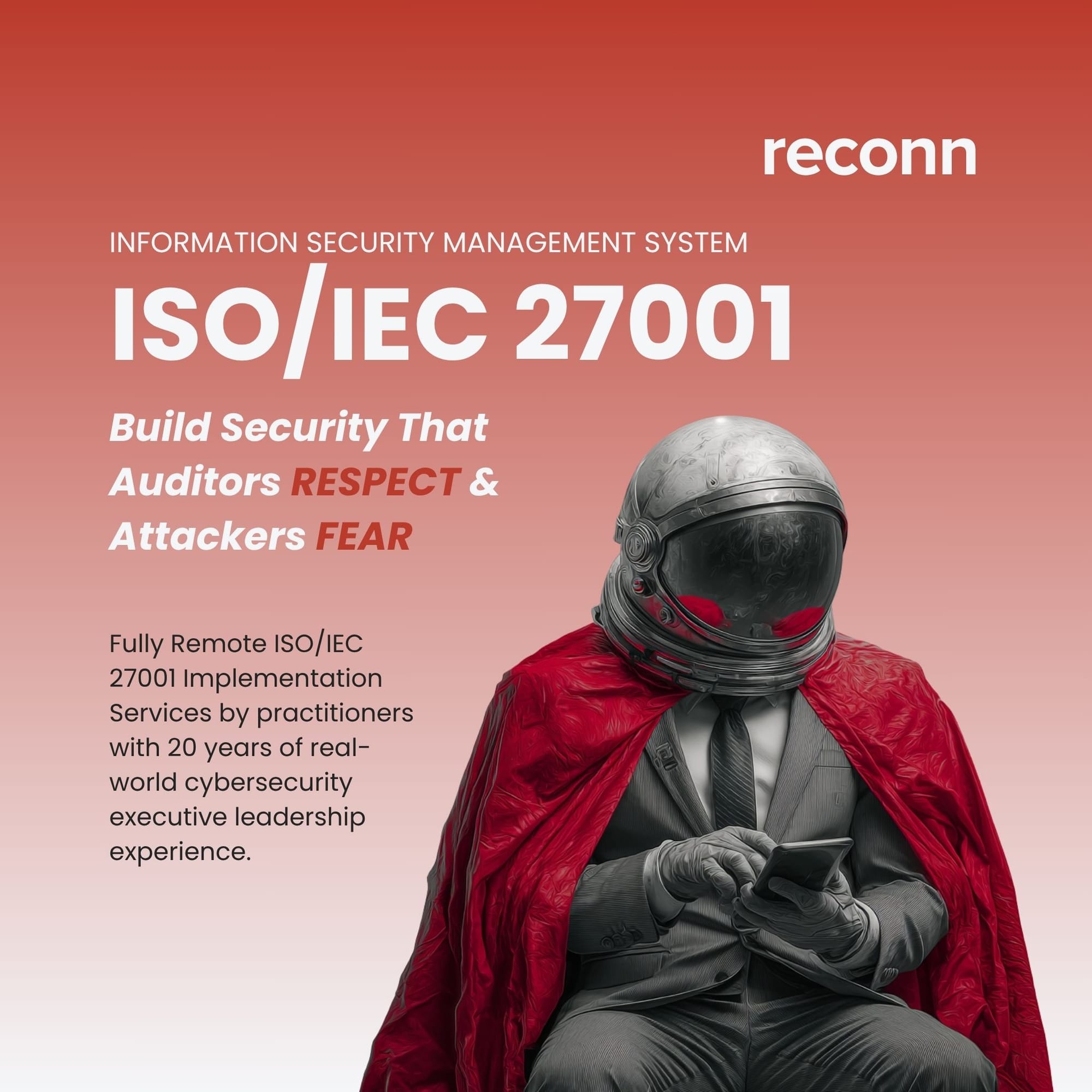A Comprehensive Handbook on Building Your ISO/IEC 27001:2022 Information Security Policy
Learn how to build an ISO 27001 Information Security Policy aligned with Clause 5.1 & 5.2. From SMART objectives to lifecycle and 10-step activities, we show how enterprises can make policies audit-ready, business-ready, and future-proof.

Over the past decade, I’ve built, audited, and implemented ISMS programs for global enterprises. The most common stumbling block? Weak or generic information security policies. ISO/IEC 27001:2022 places significant emphasis on leadership commitment (Clause 5.1) and a living Information Security Policy (Clause 5.2) that sets the tone for the entire ISMS. In this guide, I’ll show you—step-by-step—how to create and operationalize such a policy in a large enterprise context.
We’ll use one consistent scenario: a global B2B enterprise (10K+ employees, hybrid cloud, ERP, R&D, OT) building its IS policy framework. You’ll see exactly how leadership, departments, and technologies come together.
Key Takeaways
- Clause 5.1 demands visible leadership commitment, resource allocation, and integration of security into business strategy .
- Clause 5.2 requires a documented, communicated Information Security Policy aligned to business context, objectives, and continual improvement .
- A policy is a binding directive (ISO 27001:2022 Clause 3.53) vs. a guideline (ISO 21745 Clause 3.15) which is recommended but not mandatory .
- Effective policies tie into security objectives, using frameworks like SMART goals, COBIT, NIST CSF, or Balanced Scorecard.
- Enterprises need layered policies: high-level general, high-level specific, and topic-specific.
- Policy lifecycle is iterative: risk assessment, construction, implementation, monitoring.
- 10 concrete activities (from drafting models to communication and review) bring the policy from idea → signed approval → living governance.

ISO/IEC 27001 Lead Auditor Certification
100% Online ISO/IEC 27001 Lead Auditor Certification program. Choose between self-study or elearning delivery option. Includes official courseware from PECB and 2x Examination attempts.
ISO/IEC 27001:2022 Requirements to build an effective Information Security policy
Clause 5.1: Leadership & Commitment
Clause 5.1 requires top management to take accountability for the effectiveness of the ISMS. For our enterprise:
- CEO & Board endorse the ISMS and integrate security into corporate strategy.
- CIO & CISO resource programs, approve policies, and champion adoption.
- Business unit heads align processes (e.g., R&D securing IP, Finance enforcing ERP SoD).
Visible leadership actions:
- Quarterly management reviews with KPIs (patching, phishing click-rate).
- Budget sign-off for SOC, PAM, DLP.
- CEO comms reinforcing policy importance.
This fulfills 5.1 by embedding ISMS into processes and decision-making .
Clause 5.2: Information Security Policy
The policy must:
- Be appropriate to purpose/context (e.g., global supply chain, IP risks).
- Provide a framework for objectives (e.g., phishing rate reduction, uptime targets).
- Include commitments to compliance and continual improvement.
- Be documented, communicated, and available.
In practice, our enterprise writes a 2–4 page ISP (Information Security Policy):
- Purpose: protect customer data, employee data, and IP.
- Scope: all staff, contractors, systems, and data.
- Principles: Zero Trust, least privilege, defense in depth.
- Objectives: measurable (patch ≥99.9%, phishing ↓30%).
- Compliance: GDPR, SOX, PCI.
- Improvement: annual reviews + incident learnings .
Policy vs. Guideline: Why Not Just a Guideline?
I often get this question when working with enterprises that are just starting to think about security: “Why can’t we just create a guideline instead of a formal policy?”
It’s a fair point. In the early stages when information security awareness is low, and leadership hasn’t yet committed to a formal ISMS it might feel easier to roll out a guideline. Guidelines are flexible, advisory, and give staff direction without the weight of enforcement. For example, a guideline might say:
“When in doubt, classify sensitive R&D files as Confidential unless proven otherwise.”
That’s helpful, but it leaves room for interpretation.
The moment you decide to implement an ISMS under ISO/IEC 27001:2022, however, the game changes. Clause 5.1 and 5.2 require top management accountability and a formally documented Information Security Policy. A policy isn’t a suggestion—it’s a binding statement of intent and direction, signed off by leadership. For instance:
“All corporate data must be classified and handled according to the Data Classification Policy.”
That shift from guideline to policy signals maturity: leadership is no longer asking politely but setting a clear standard that staff must follow. Policies form the backbone of your ISMS, anchoring everything from awareness training to risk treatment and audits.
So yes, at the very beginning, you might “get away” with guidelines. But once the enterprise commits to ISO/IEC 27001:2022, policies are non-negotiable. They provide the enforceable structure needed to demonstrate compliance, pass audits, and—most importantly—protect your organization’s assets consistently.
Information Security Objectives: The Compass of Your Information Security Policy
When I guide leadership through drafting an Information Security Policy, one of the most important conversations is around objectives. Why? Because without objectives, a policy is just a statement of good intentions. With objectives, it becomes a measurable program of action that leadership, staff, and auditors can all track.
Why Objectives Belong in the Policy
ISO/IEC 27001:2022 makes this non-negotiable. Clause 5.2 requires that your Information Security Policy not only define direction but also provide a framework for establishing and reviewing objectives. In practice, this means:
- Leadership commitment is translated into measurable outcomes.
- Auditors and regulators can assess effectiveness against evidence.
- Staff know what success looks like and how their work contributes.
Without objectives, your teams may “try their best” but never know if controls are actually moving the needle.
With vs. Without Objectives in Our Enterprise
Take our global enterprise of 10,000 staff, spread across Finance, IT, and Operations:
- Without objectives:
The policy says, “We commit to protecting ERP systems against fraud.” Nice words, but Finance doesn’t know what level of fraud reduction is expected, and IT doesn’t know how to measure control effectiveness. - With objectives:
The policy defines, “We will reduce ERP fraud attempts by 40% within 12 months by strengthening segregation of duties, automating reconciliation, and monitoring access logs daily.” Now Finance has a clear goal, IT knows what controls to deploy, and management can measure quarterly progress.
Examples of SMART Enterprise Objectives
- Finance: Reduce ERP fraud attempts by 40% in 12 months.
- IT: Achieve 100% completion of quarterly privileged access reviews.
- Operations (OT): No plant downtime incident exceeding 2 hours per year.
Each of these objectives is SMART—Specific, Measurable, Achievable, Relevant, and Time-bound.
How Governance Models Strengthen Objectives
To make objectives even stronger, we can frame them using recognized governance frameworks:
- NIST CSF: Aligns objectives with risk-based cybersecurity outcomes.
- Example: “Detect ERP anomalies within 24 hours.” → This directly maps to the “Detect” function in NIST CSF.
- COBIT 2019: Ensures IT and security objectives meet broader governance and regulatory needs.
- Example: “Align privileged access reviews with SOX and GDPR obligations.” → This ties your ISMS to corporate governance.
- Balanced Scorecard (BSC): Links security outcomes to business performance (Financial, Customer, Internal Process, Learning & Growth).
- Example: “Reduce ERP fraud by 40% = lower financial loss = stronger shareholder trust.”
By aligning objectives to these models, your IS Policy shows that security isn’t just “IT hygiene.” It’s a business enabler, auditable by regulators, and visible to the boardroom.
In short, your policy sets the direction, and your objectives prove whether the enterprise is delivering on its promise.

PECB Catalogue
Explore PECB’s globally recognized course catalogue featuring certifications in AI, cybersecurity, ISO standards, governance, risk, and compliance—designed for professionals seeking expertise and career advancement.
Types of Information Security Policies
When building an ISMS, it’s not enough to have one policy and call it a day. Policies exist at different levels of depth, each serving a unique purpose. Think of them like a pyramid: the top sets direction, the middle defines domains, and the bottom drills into operational specifics.
1. High-Level General Policies
This is the umbrella policy—your organization’s Information Security Policy. It’s signed by top management and states the enterprise’s intentions and direction. It sets the tone for everything that follows.
- Purpose: Define enterprise-wide commitment to security and compliance.
- Audience: Everyone—from executives to frontline staff.
- Example in our enterprise:
“We commit to protecting all enterprise information assets—including ERP systems, customer records, and operational data—by implementing an Information Security Management System (ISMS) in line with ISO/IEC 27001.”
Without this, employees don’t see a unifying direction, and auditors won’t recognize a formal ISMS anchor.
2. High-Level Specific Policies
Once the umbrella is in place, you’ll need domain-focused policies that break commitments into specific areas. These are still strategic, but narrower in scope—like privacy, access management, or supplier security.
- Purpose: Translate the general policy into domain-level commitments.
- Audience: Department heads, risk owners, compliance managers.
- Example in our enterprise:
Data Protection Policy → “All personal data processed in ERP and CRM systems will be handled in compliance with GDPR, UAE PDPL, and other applicable regulations.”
Access Control Policy → “All privileged accounts must be reviewed quarterly by IT and validated by internal audit.”
These policies guide specific business areas but still remain high-level and non-technical.
3. Topic-Specific Policies
Finally, at the operational level, we draft detailed topic-specific policies. These explain exactly how staff should behave or how systems should be secured. They often accompany procedures and technical standards.
- Purpose: Provide clear rules for daily operations.
- Audience: IT teams, end-users, and contractors.
- Examples in our enterprise:
- Acceptable Use Policy: Defines how employees may use email, internet, and company laptops.
- Cloud Security Policy: Specifies security requirements for workloads hosted on AWS and Azure.
- BYOD Policy: Defines how employees can securely access corporate email and ERP apps from personal devices.
Without topic-specific policies, employees are left guessing about the “how,” and incidents spike due to inconsistent practices.
Why All Three Levels Matter
Imagine if our enterprise had only the general policy: staff would know security is “important,” but IT wouldn’t know how to manage privileged access, and end-users wouldn’t know if installing random apps on work laptops is allowed.
By layering:
- General policies → Enterprise-wide direction.
- Specific policies → Departmental commitments.
- Topic-specific policies → Operational rules.
…you create a cohesive policy ecosystem that scales from the boardroom to the server room.

ISO/IEC 27001 Remote Implementation Services
Fully Remote ISO/IEC 27001 Implementation Services by practitioners with 20 years of real-world cybersecurity executive leadership experience.
Information Security Policy Development Lifecycle
Developing an Information Security Policy isn’t a one-time writing exercise, it’s an iterative lifecycle. Each phase builds on the last, and improvements never stop. In a global enterprise scenario, this life cycle ensures policies stay relevant, effective, and aligned with both business needs and ISO/IEC 27001:2022 requirements.
Phase 1: Risk Assessment
Every strong policy begins with understanding risk. In our enterprise, different departments face different threats:
- R&D: High risk of intellectual property theft, especially from competitors or insider leaks.
- Finance: ERP fraud and unauthorized access to payment workflows.
- Operations (OT plants): Downtime or sabotage of critical production systems.
- IT: Ransomware targeting employee endpoints and cloud workloads.
Using ISO/IEC 27005 and the NIST Risk Management Framework, we map out:
- Assets: ERP system, CAD files, OT plant controllers.
- Threats: Fraud, espionage, ransomware, supply chain compromise.
- Vulnerabilities: Weak privileged access management, poor data classification, unpatched OT devices.
- Impact: Financial loss, regulatory fines, production halts, reputational damage.
By quantifying risks (likelihood × impact), we prioritize where the policy must set strong guardrails. For example, if ERP fraud risk scores “High,” the policy must include strict privileged access review requirements.
This phase ensures the policy is context-fit—not generic boilerplate. It also satisfies Clause 4 (context of the organization) and feeds directly into the commitments in Clause 5.2.
Phase 2: Policy Construction
Armed with risks, we move to drafting. Here, structure is everything. We use the PECB policy template (Purpose → Scope → Roles → Policy Statements → Compliance).
- Purpose: Why the policy exists (e.g., protect ERP and OT systems).
- Scope: All employees, contractors, and systems.
- Roles: CISO, IT Security, Department Heads, End-Users.
- Policy Statements: High-level rules mapped to risks (e.g., “All privileged access must be reviewed quarterly”).
Key here is embedding Clause 5.2 commitments:
- Alignment with organizational context.
- Measurable objectives.
- Compliance with legal/regulatory requirements.
- Commitment to continual improvement.
To avoid silos, construction is cross-functional. IT brings in technical needs, HR ensures people-related clauses (like onboarding security), Legal checks regulatory fit (GDPR, UAE PDPL), and Finance demands fraud controls.
For example, HR might push for a Clean Desk Policy, while Finance insists on segregation of duties in ERP. By co-drafting, we balance perspectives and ensure ownership across the enterprise.
Phase 3: Policy Implementation
Even the best-written policy fails without effective rollout. In our enterprise, we deploy on two fronts:
- Awareness & Communication:
- CEO email announcing the policy.
- Training modules in the Learning Management System (LMS).
- Posters in OT plants (“No Badge, No Entry” campaigns).
- Staff acknowledgment recorded in HRIS (digital sign-off).
- Technical Enforcement:
- MFA → enforced for ERP, email, and VPN access.
- DLP policies → block unencrypted transfers of CAD files.
- Privileged Access Management (PAM) → enforce segregation in Finance.
- SIEM alerts → flag anomalous OT traffic.
This dual approach prevents the classic failure of “policy on paper, but not in practice.” By making compliance both cultural (awareness) and technical (enforcement), staff cannot ignore it, and leadership sees real-world impact.
Phase 4: Monitoring & Maintenance
Policies age quickly, threats evolve, regulations shift, and businesses expand. To keep ours relevant, we embed monitoring from day one.
Key KPIs in our enterprise:
- Phishing click rate: Must drop by 50% in 12 months after awareness campaigns.
- Endpoint encryption coverage: Target 100% of laptops/desktops.
- Privileged Access Review completion: 100% quarterly for Finance ERP.
- SIEM coverage: Expand to 95% of OT assets within a year.
The CISO reports quarterly to the Executive Committee, using these KPIs as evidence of effectiveness.
We also trigger ad-hoc reviews:
- After a major incident (e.g., ransomware attack on a supplier).
- After regulatory change (e.g., new UAE data protection laws).
- After business shifts (e.g., new plant expansion in Asia).
Each review may lead to policy updates, which are re-approved by management and re-communicated to staff. This loop makes the lifecycle truly iterative.
By following this lifecycle, our enterprise ensures policies don’t just check a compliance box—they actively reduce risk, enable operations, and demonstrate governance at the highest level.
Step-by-Step Activities to Create an Information Security Policy
1. Create Policy Models
The first step is setting up policy models—essentially, reusable templates that define structure and format. In our enterprise, these are stored in Confluence and linked to the Document Management System (DMS). The template includes:
- Title & ID (e.g., ISP-001)
- Purpose & Scope
- Objectives & Principles
- Roles & Responsibilities (R&R)
- Policy Statements
- Compliance References
By standardizing, we avoid a situation where the Information Security Policy (ISP) looks different from the Access Control Policy or Cloud Security Policy. This ensures auditors, staff, and management see consistency.
Example: Our ISP model is also applied to the Acceptable Use Policy. Both share the same headings, approval workflow, and versioning rules. This uniformity strengthens governance and makes training easier—employees recognize structure and can focus on content.
2. Draft the Umbrella ISP
The Information Security Policy (ISP) is the umbrella document. In our enterprise, it runs 3–4 pages, balancing clarity with authority. Drafting is done collaboratively by the CISO’s office, with input from IT, HR, Legal, and Finance.
The ISP explicitly addresses Clause 5.2 requirements:
- Context: Enterprise operations across Finance, R&D, OT plants.
- Objectives: E.g., “Maintain 99.9% uptime in OT systems.”
- Compliance: GDPR, UAE PDPL, SOX, and industry regulations.
- Continual Improvement: Annual reviews, quarterly KPI tracking.
Circulation: Drafts are shared enterprise-wide via DMS, with a comment cycle so departments can raise concerns. For example, Finance ensures ERP fraud controls are embedded, while Ops confirms plant resilience is prioritized.
3. Define Policy Components
This step transforms a draft into a fully compliant document by embedding ISO/IEC 27001:2022 essentials:
- Objectives: SMART goals (e.g., reduce ERP fraud attempts by 40%).
- Commitments: To legal/regulatory requirements.
- Improvement: Continuous monitoring and review.
- Context: Reference enterprise risk landscape (ERP, R&D, OT).
For our enterprise, a key component is:
“OT plants must achieve 99.9% uptime. Any downtime > 2 hrs must trigger an incident review with root cause analysis.”
This ensures the policy is living and measurable, not aspirational. It also creates accountability across departments—Ops for uptime, IT for monitoring, and the CISO for reporting.
4. Draft Sections
We now break the ISP into structured sections using the model:
- Purpose: Why the policy exists.
- Scope: Employees, contractors, and suppliers.
- Principles: Confidentiality, integrity, availability, compliance.
- Roles & Responsibilities:
- R&D: Secure source code repositories.
- Finance: Enforce segregation of duties (SoD) in ERP.
- IT: Implement MFA, PAM, and DLP.
- Ops: Monitor OT uptime.
- HR: Run awareness campaigns and disciplinary actions.
By tying each section to real enterprise functions, employees can see where they fit into the bigger picture.
5. Validate Content & Format (Clause 7.5.3)
ISO/IEC 27001:2022 requires policies to be controlled documents. In our enterprise, validation means:
- DMS version control: Every edit is logged.
- Approval workflows: Draft → Review → Approve → Publish.
- Access controls: Read-only for employees, edit rights only for ISMS team.
- Retention rules: Superseded versions archived but accessible for audit.
This prevents a nightmare scenario where multiple versions circulate. For example, during an ISO/IEC 27001:2022 audit, the auditor will ask for “the current Information Security Policy.” With versioning and approval in DMS, we can confidently provide a single, signed copy.
6. Validate with Interested Parties
Policies fail if they ignore stakeholders. Our enterprise runs validation workshops:
- HR: Ensures disciplinary procedures for violations are fair and clear.
- Legal: Confirms GDPR, SOX, and UAE PDPL compliance.
- Ops: Ensures OT-specific needs (e.g., downtime tolerances) are realistic.
- Regional MDs: Confirm local labor/data laws (e.g., EU vs Middle East).
For instance, Legal flagged that our “data retention” clause in HR systems needed alignment with UAE employment law. By validating early, we avoid rework during external audits or regulatory reviews.
7. Draft Specific Security Policies
The ISP sets the umbrella direction. Now, topic-specific policies translate direction into operational controls. Examples in our enterprise:
- Acceptable Use Policy: “No personal Dropbox on corporate laptops.”
- Cloud Security Policy: AWS and Azure workloads must enforce encryption at rest and MFA.
- DLP Policy: Blocks outbound transfers of R&D CAD files.
- Incident Response Policy: Defines 2-hr SLA for reporting breaches.
- Business Continuity Policy: Requires annual recovery testing of ERP and OT.
These drill-down policies ensure staff don’t just know security matters they know exactly what’s expected of them.
8. Obtain Management Approval
Approval makes the policy binding. In our enterprise, the chain is:
- Draft approved by CISO.
- Reviewed by ISMS Steering Committee.
- Final sign-off by Board of Directors.
- CEO email announcement enterprise-wide.
This CEO endorsement is critical,. It signals to all 10,000 staff that the policy is not “IT’s document” but a business directive from the top.
9. Communicate the Policies
Policies die in silence. We communicate through multiple channels:
- Intranet: Policies published with FAQs.
- E-learning: Mandatory modules, with 90%+ completion tracked.
- Townhalls: Departmental briefings (Finance fraud, OT uptime, R&D IP).
- Tech enforcement: MDM blocks jailbroken devices, DLP stops USB transfers, PAM enforces ERP SoD.
This way, awareness is paired with technical guardrails, making compliance unavoidable.
10. Control, Evaluate, Review
Finally, policies must evolve. In our enterprise:
- Annual reviews: By the CISO and Steering Committee.
- Quarterly KPIs: Phishing click rates, PAM reviews, SIEM coverage.
- Incident feedback: Post-incident reviews update relevant sections.
- Audit readiness: All evidence stored in DMS for ISO 27001 audits.
For example, when a supplier suffered ransomware, we immediately reviewed our Third-Party Security Policy and tightened vendor onboarding requirements.
This closes the loop making the ISP a living policy, not a dusty PDF.
With these 10 activities, our enterprise builds an Information Security Policy that is strategic, auditable, and operationally effective—a true backbone of the ISMS.
Conclusion
An Information Security Policy is not just a document, it’s the constitution of your enterprise’s security posture. In our large enterprise example, it became the common language linking Finance’s fight against ERP fraud, R&D’s protection of source code, and OT’s mission for uptime. By anchoring the policy in Clause 5.1 and 5.2, defining SMART objectives, and building through the 10 structured activities, you’re not drafting paperwork, you’re embedding resilience into the very DNA of your business.
The key lesson here is that a policy is not static. It evolves through risk assessment, construction, implementation, and continuous monitoring. It earns credibility through management endorsement and relevance through department-level validation. And it only lives if it’s communicated clearly and reinforced through both awareness and technical enforcement.
At reconn, we know that enterprises often struggle with turning these principles into practice. That’s why we support organizations in two ways:
- Through our ISO/IEC 27001:2022 Lead Auditor & ISO/IEC 27001:2022 Lead Implementer training, where we use real-world enterprise scenarios, templates, and Q&A to help you build policies that pass audits and protect operations.
- Through our remote ISO/IEC 27001:2022 implementation services, where our team guides you end-to-end conducting gap assessments, drafting policies, defining objectives, and preparing for certification—all delivered virtually, cost-effectively, and with minimal disruption to your business.
In short: a well-crafted Information Security Policy is where commitment becomes control, and compliance becomes culture. With the right training and expert support, your ISMS won’t just be audit-ready—it will be business-ready, resilient, and future-proof.



